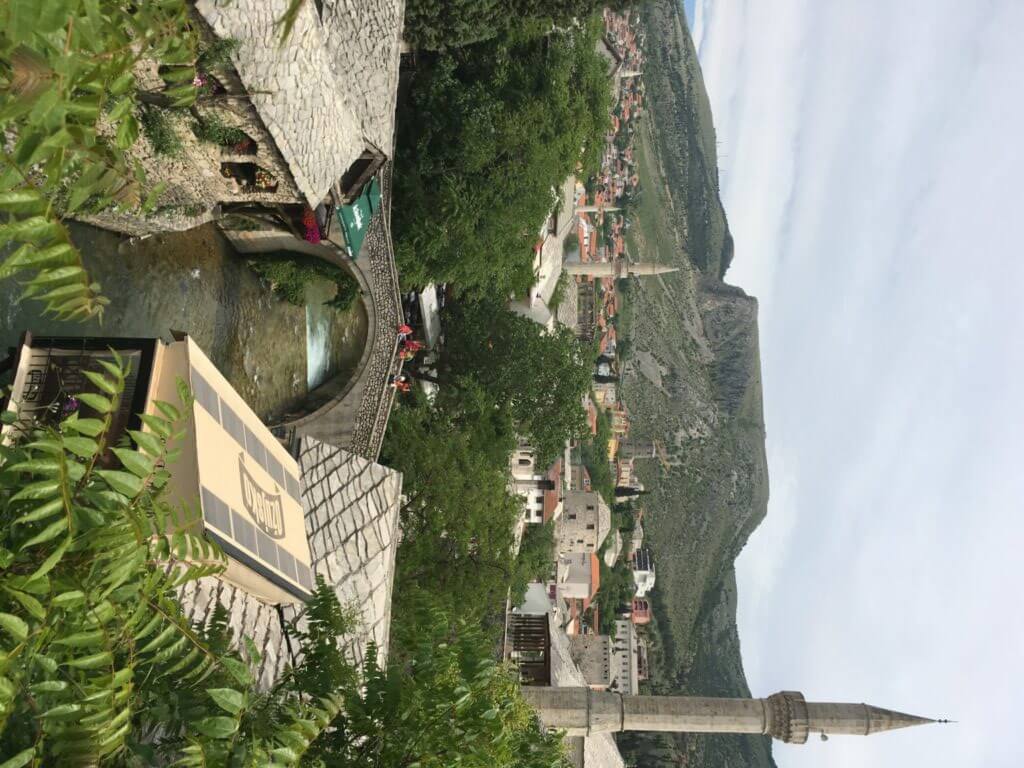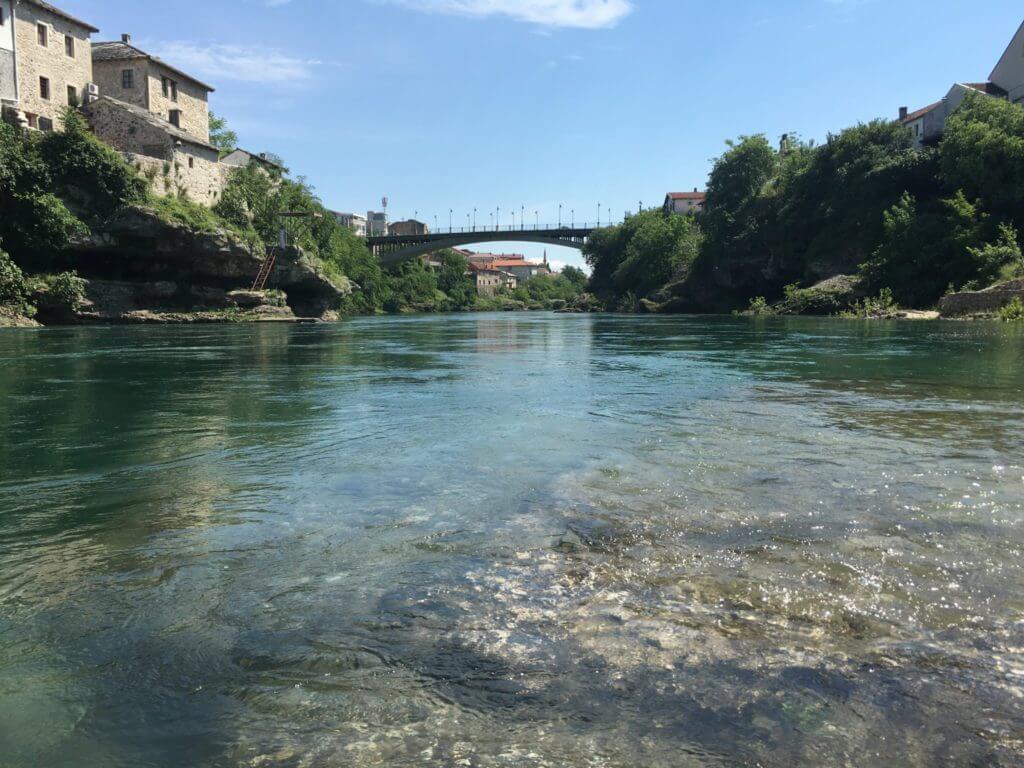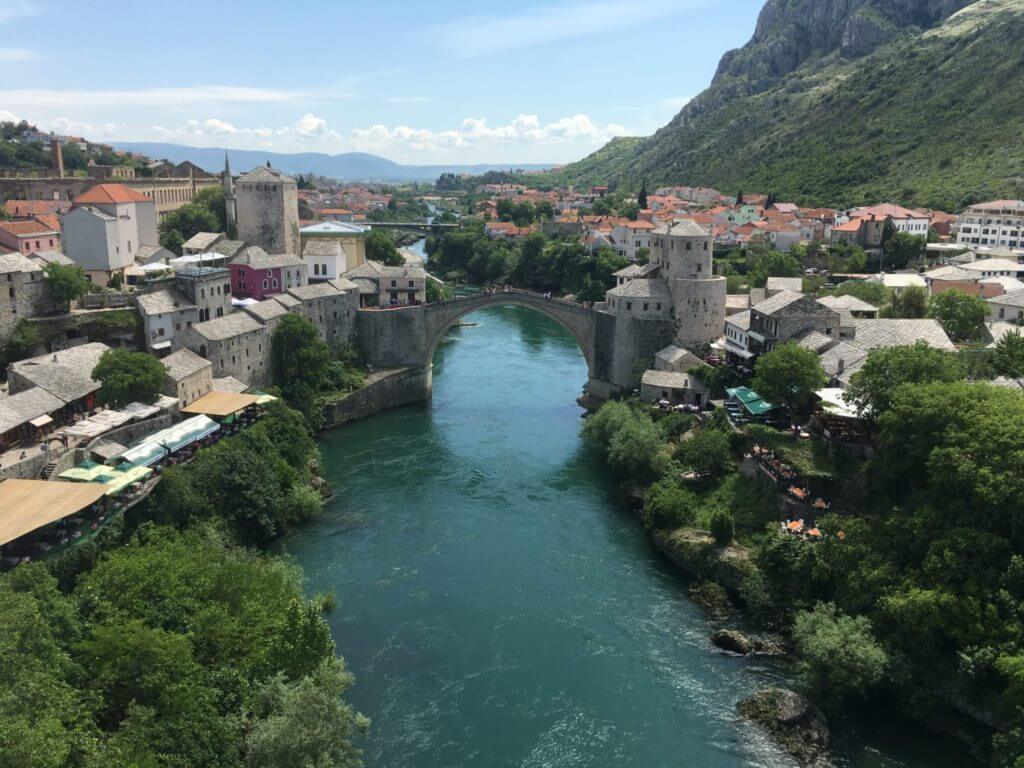Walking from our drop off point next to the cathedral in the New town, I could have been anywhere. There is no hint, on the surface at least, of the death and destruction that rained down on the historic town of Mostar after the break up of Yugoslavia.
Like a great many people of a certain age, I looked at my television screen in disbelief in the early 90’s when footage of the destruction of Mostar was broadcast over the world nightly on the news.
Destruction of Mostar
Being a strategic link for the Army of the Republic of Bosnia and Herzegovina (ARBiH) and by local inhabitants on both sides of the Neretva River for communication and supply, the bridge became a focal point of hostilities by the Croatian Defence Council (HVO) from June 1993.
It was rare that nightly news updates in the summer of 1993 didn’t feature footage of the bombing of the bridge until, finally, on 9th November the bridge that had stood proudly as a symbol of the city since 1566, finally crumbled from the constant bombardment into the freezing cold waters of the Neretva River below. All caught on camera. The world looked on in shock and disbelief.
Reconstruction of Mostar
After the war finished in 1994 a committee was organised to oversee the reconstruction of the Stari Most Bridge which finally commenced in the summer of 2001 finishing just over 3 years later in 2004. Spain donated the money for the restoration of the Stari Most Bridge and over US$15 million has been spent on restoring the Old Town to its former glory.

Fabulous restaurants line the streets all around the Old Town. Some like this one nestled by fast flowing waterways.
Now, more than 20 years on, tourism has returned to this spectacular city while the rebuilding is still going on. Look closely at a lot of the buildings in the Old Town, which was almost completely destroyed, you can still see the scars on the buildings in the form of bullet holes high in the walls. Most of the Old Town has been restored but there are odd buildings dotted around, left as reminders of the the bitter war.
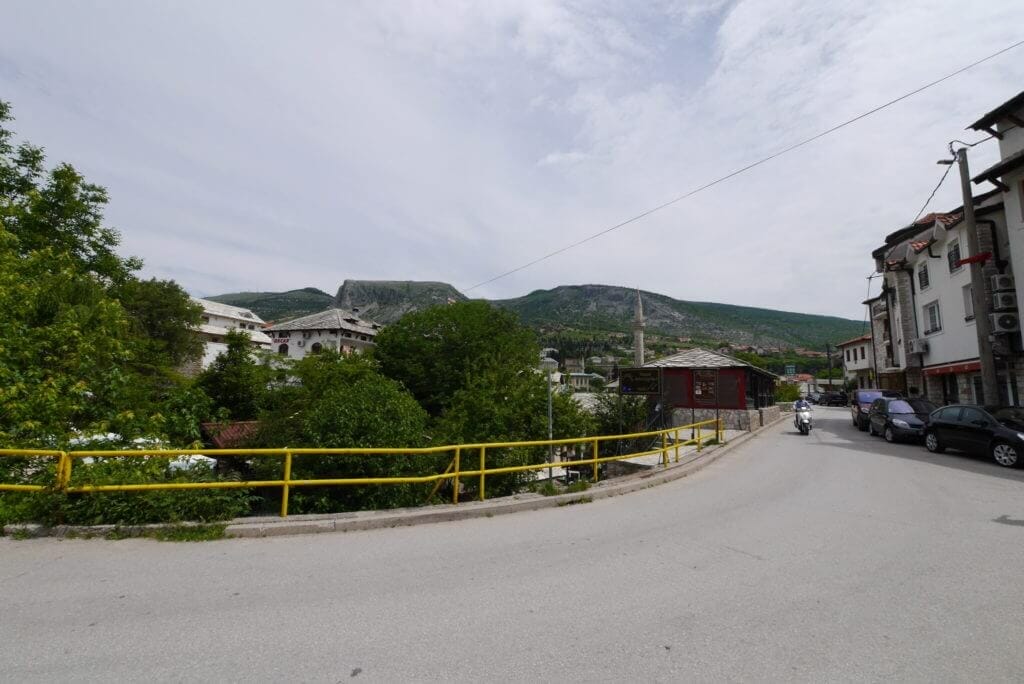
The Old Town isn’t accessible by car and the New Town gives no hint to the wonder that hides within its narrow cobbled streets.
Crossing the main road and heading past the reconstructed Crooked Bridge (a smaller version of the Stari Most Bridge around the corner), looking around at street level there was hardly any hint of what happened here just over 20 years ago.
Mostar Old Town
The streets of the Old Town bustle with life as tourists check out the wares in the abundant stalls lining seemingly every inch of spare space along the myriad pathways that make up the cobbled streets of the Old Town while many others sit in the restaurants and cafes eating lunch or enjoying a drink while watching the world pass by.

The cobbled streets of the Old Town certainly aren’t easy to get around thanks to the cobbles but they are picturesque.
The constant flow of people heading for the biggest draw, the Stari Most bridge (or Old Bridge), make getting lost in the small maze of passages very difficult. Don’t be afraid to explore, you will be surprised at some of the amazing restaurants and tiny cafes tucked away along the rivers edge and some pathways end up in surprising ways giving you a new perspective of the famous bridge.
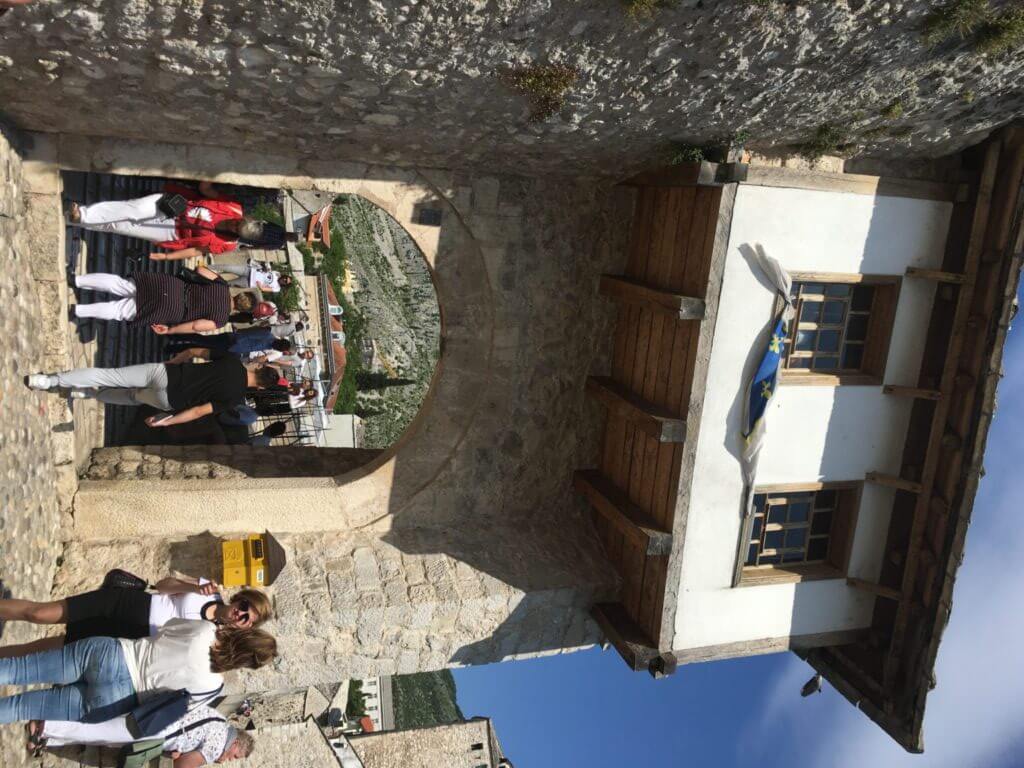
The unassuming reconstructed entrance to the Old Bridge. Looks fantastic but it does create a bit of a bottleneck.
Once on the bridge you realise how much steeper it is in real life compared to TV and it looks plenty steep enough on TV! At the apex of the bridge the famous bridge divers ply their trade.

Looking across the Old Bridge towards the New Town. The bridge has been reconstructed immaculately using ancient Ottoman techniques.
Touching the surprisingly fast flowing and frigid water of the Neretva River later in the afternoon, it’s not surprising to learn that more than a few tourists that have tried this most dangerous of occupations have ended up in trouble. If you want to see it done pay the professionals and enjoy your front row seat from the much warmer banks of the river rather than ending up in it.
Just across the bridge there is a small museum (once the jail for prisoners of war), and a tiny bookshop that shows a very informative video of the destruction of the town and bridge for a nominal fee that is very much worth it.

The bridge was reconstructed using tenelia stone from local quarries. Stones from the original bridge were recovered from the river bed and also used.
Keeping an ear to the ground I had heard that its possible to get a birds eye view of the bridge from the only publicly open mosque in town, the Cejvan Cehaj Mosque, built in 1552 it predates the original Stari Most Bridge by 14 years.
Look up as you hit the banks of the far side of the river and you can’t miss it. It’s probably not good for those with a fear of confined spaces (the spiral staircase up the minaret) or heights (the ledge is a little on the small side for even 4 people) but if you want a different view of the town while helping to support the upkeep of one of the oldest local buildings I highly recommend the 20 minute detour.
Mostar today is a city reborn. Tourism is thriving thanks to the Stari Most bridge and also the Old Town being added to the UNESCO World Heritage List in 2005.
Mostar is still home to some noteworthy sites; a Jewish Memorial Cemetery, Metropolitan’s Palace, Orthodox Church, Catholic Church, a Franciscan Monastery and several Ottoman residences dating from the 16th-19th centuries.
Mostar is well served by the Mostar International Airport as well as good railway connections to international destinations. If, like me, you stay in Dubrovnik on the Croatian coast for a few days, several companies run tours to Mostar that are easily done in a day or you can hire a car and drive yourself.
However you decide to get here you should make the effort. Mostar will repay you with history, tragedy and triumph.
 Copyright secured by Digiprove © 2016-2017
Copyright secured by Digiprove © 2016-2017

